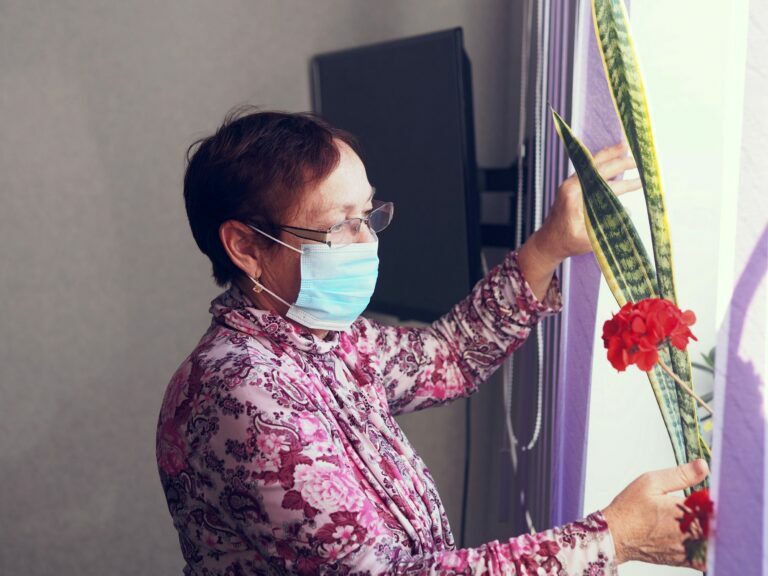The ability to measure the level of oxygen in the blood is essential for monitoring and treating various medical conditions. Pulse oximetry is a noninvasive and painless test that provides a quick and easy way to measure oxygen saturation. It was especially helpful during the surge of COVID-19 cases.
Understanding how a pulse oximeter works and how to interpret the readings can be valuable for patients with respiratory or cardiac conditions, as well as those who want to monitor their oxygen levels for general health purposes.
In this article, we will provide an easy-to-understand guide on how a pulse oximeter works and what the readings mean. We will also provide practical tips for using a pulse oximeter and discuss additional considerations related to pulse oximetry.
How Does a Pulse Oximeter Work?
A pulse oximeter is a small device that is commonly placed on a person’s fingertip or earlobe. It works by emitting light at two different wavelengths, typically red and infrared, which pass through the body part and are absorbed by pulsatile arterial blood. The amount of light absorbed by the blood is dependent on the concentration of hemoglobin (hb) that is carrying oxygen, as oxygenated hemoglobin absorbs more infrared light and deoxygenated hemoglobin absorbs more red light.
The device measures the absorption of light at these wavelengths and calculates the oxygen saturation level by comparing the amount of light that passes through the finger with the amount of light that was emitted. The pulse oximeter also determines the pulse rate by detecting the pulsatile arterial blood that passes through the body part being measured.
It’s important to note that there are some factors that can affect the accuracy of a pulse oximeter, such as dark skin pigmentation, nail polish, and certain medical conditions that affect blood flow or oxygen saturation levels. However, take note though that according to a study published in the National Library of Medicine, pulse oximeters cannot measure the partial pressure of oxygen (PaO2) or the carbon dioxide (CO2) level in the blood, which are typically measured using arterial blood gas measurements.
Understanding Pulse Oximeter Readings
The readings provided by a pulse oximeter are usually displayed as a percentage and represent the oxygen saturation level of the blood. Normal oxygen saturation levels range from 95 to 100%. A reading below 90% indicates a low oxygen saturation level and may be a sign of hypoxemia, which is a condition where the body is not getting enough oxygen. In critical care settings, healthcare providers may aim for oxygen saturation levels between 88% and 92% to avoid the risk of oxygen toxicity.
It’s important to keep in mind that pulse oximeter readings may not always be accurate, especially in people with certain medical conditions or dark skin pigmentation. Additionally, the device may not be as accurate when used during physical activity or when the person is cold.
In some cases, a pulse oximeter may display an erroneous reading due to factors such as poor blood flow or motion artifacts. If you are concerned about the accuracy of your readings or if you experience symptoms such as shortness of breath or chest pain, it’s important to contact a healthcare provider.
Practical Tips for Using a Pulse Oximeter
If you’ve recently purchased a pulse oximeter, here are some practical tips to help you use it effectively:
- Choose the right body part: Pulse oximeters can be used on a fingertip or an earlobe, but a fingertip is usually the easiest and most convenient option. Make sure the chosen body part is clean and dry before using the device.
- Avoid nail polish: Study shows that nail polish can affect the accuracy of a pulse oximeter reading, so it’s best to avoid using the device on a finger with nail polish.
- Stay still: To get an accurate reading, it’s important to remain still while using the pulse oximeter. Any movement can cause motion artifacts and affect the accuracy of the reading.
- Warm up: If you’re in a cold environment, warm up your hands before taking a reading. Cold fingers can cause poor blood flow and affect the accuracy of the reading.
- Follow the manufacturer’s instructions: Different pulse oximeters may have slightly different instructions, so be sure to follow the instructions provided by the manufacturer for the best results.
- Take multiple readings: Taking multiple readings over a few minutes can help ensure accuracy and provide a better understanding of your oxygen saturation levels.
- Consult with your healthcare provider: If you have any questions or concerns about using a pulse oximeter or interpreting the readings, it’s important to consult with your healthcare provider.
By following these practical tips, you can use a pulse oximeter effectively and get accurate readings to monitor your oxygen levels.
Additional Considerations for Pulse Oximetry
While pulse oximetry is a useful tool for monitoring oxygen levels, there are some additional considerations to keep in mind:
- Not a substitute for medical advice: While a pulse oximeter can provide valuable information about your oxygen levels, it’s important to remember that it’s not a substitute for medical advice. If you’re experiencing symptoms or have concerns about your health, it’s important to consult with a healthcare provider.
- Accuracy limitations: Pulse oximeters have limitations and may not provide accurate readings in certain situations. For example, they may not be accurate in cases of poor circulation, low blood pressure, or abnormal hemoglobin levels.
- Skin pigmentation: Skin pigmentation can affect the accuracy of pulse oximeter readings, with darker skin tones often producing less accurate readings. If you have dark skin pigmentation, it’s important to take readings with caution and consult with a healthcare provider if you have concerns.
- Respiratory conditions: Pulse oximeters can be helpful for monitoring oxygen levels in respiratory conditions such as asthma, chronic obstructive pulmonary disease (COPD), and COVID-19. However, it’s important to note that pulse oximeter readings should not be the sole factor in determining the severity of these conditions and should be used in conjunction with other medical assessments.
- Calibration: Pulse oximeters may need to be calibrated periodically to ensure accuracy. Consult the manufacturer’s instructions for guidance on how often calibration is necessary and how to perform it.
By keeping these additional considerations in mind, you can use pulse oximetry effectively as part of your overall health monitoring.
DrKumo Remote Patient Monitoring For Efficient Pulse Oximetry Test
DrKumo remote patient monitoring (RPM) technology offers a highly efficient solution for conducting pulse oximetry tests. With the use of pulse oximeters, healthcare providers can remotely monitor the oxygen saturation levels of their patients in real-time, providing timely intervention and support. DrKumo also offers other wearable devices that could help monitor other vitals.
DrKumo RPM solution is designed to assist healthcare providers in managing chronic diseases, acute care, post-operation, and hospital care at home. The platform is user-friendly and powered by a state-of-the-art, HIPAA-compliant, mobile-enabled, continuous real-time monitoring, and AI/ML engine.
Using DrKumo RPM technology, patients can comfortably manage their health conditions at home while healthcare providers receive real-time intelligence for timely intervention. The RPM solution enables remote pulse oximetry testing, eliminating the need for patients to visit clinics or hospitals for routine monitoring.
DrKumo RPM technology is a game-changer in the healthcare industry, providing access to quality health care across the world. With a culture that is innovative, collaborative, and technology-driven, DrKumo provides effective solutions to both patients and healthcare providers.
Takeaways
Pulse oximetry is a noninvasive and painless method for monitoring oxygen levels in the blood. By using a pulse oximeter, patients can gain insight into their oxygen saturation levels and make informed decisions about their health. However, it’s important to remember that pulse oximeters have limitations and should not be used as a substitute for medical advice. By following the practical tips outlined in this guide and considering the additional considerations for pulse oximetry, patients can use pulse oximetry effectively as part of their overall health monitoring.
Take control of your health and consider RPM to stay on top of your pulse oximetry readings and manage your health condition from the comfort of your own home. Contact DrKumo now.








